Traditional German Potato Dumplings or balls, also known as Kartoffelkloesse, made two ways: with cooked potatoes and with a mixture of cooked and raw potatoes. A perfect side dish to meat dishes also great as a standalone vegetarian dish!
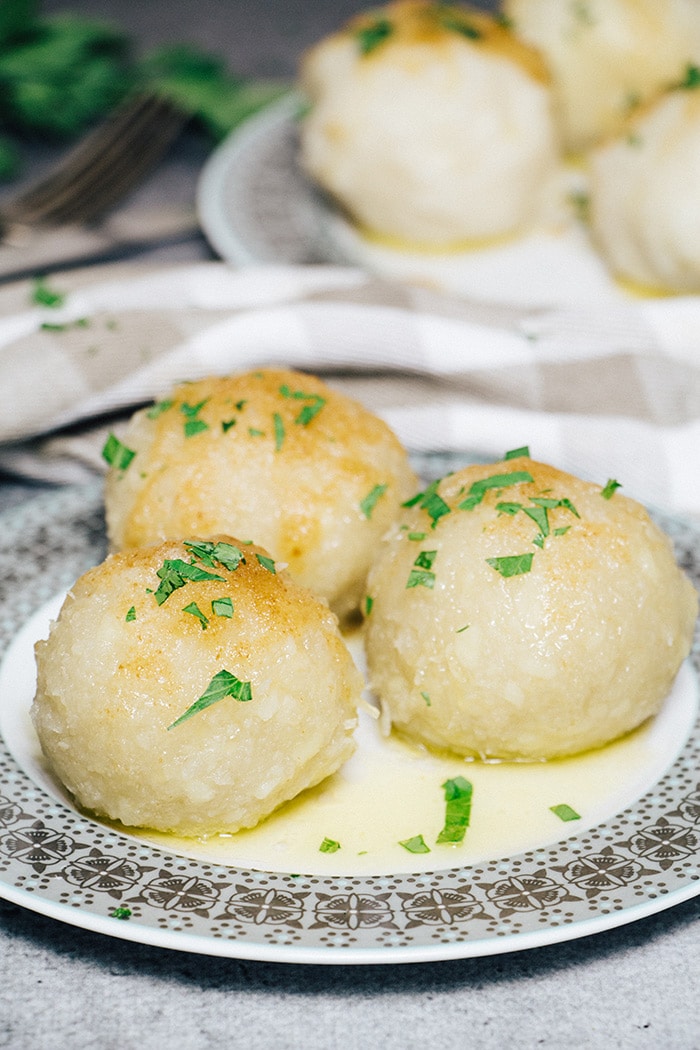
I have always enjoyed any type of dumpling I have ever had the pleasure of tasting. It's simply amazing how many different types of dumplings are out there!
Dumplings have been around for a very long time and were originally used to help families stretch a meal. It was a tasty inexpensive filler, to easily add to a meal.
Nowadays, however, their status, as with many other peasant dishes, has changed and they are enjoyed everywhere around the world even by gourmets.
So what is a dumpling? A dumb question, you will say. Well, until a few years ago I thought that it's a cooked ball of dough based from flour with meat, fish, veggies or sweets inside which is boiled, steamed, simmered, fried or baked.
However, to my surprise, when I created this blog and started exploring various cuisines, I found out that dumplings are also made of potato or even bread dough! Well, you live you learn.
Since then I already tried sweet plum dumplings and savory dumplings called Shlishkes both from Hungary and both made from mashed potatoes. They were epic!
That's why today I'm once again diving into the world of potato dumplings. This time we are going to Germany!
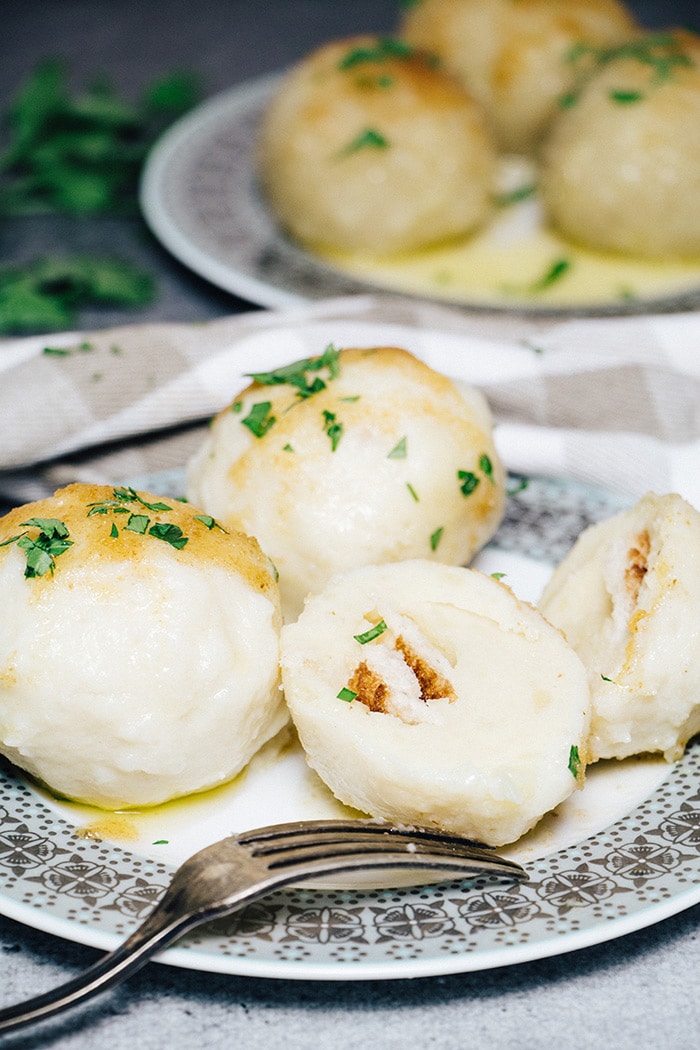
Dumplings are very popular in Germany and they are served at almost every meal. They are known as Klosse in Western and Northern Germany and as Knodel in South Eastern Germany.
I have been to Germany and dumplings are served in most restaurants but some of the best I have tasted are from street vendors. There is also a dumpling museum that if you are in Germany you can visit. It is the Thuringian Dumpling Museum and you will learn the history of the dumpling, how to make the dumpling and have a tasting festival at the end. It is listed as one of the top ten cuisine museums in the world.
German potato dumplings or balls as someone calls them (they really do look like balls) are usually served as a side dish with sausage or a meatloaf type dish. Especially they go really well with Sauerbraten and red cabbage. However, Kartoffelkloesse are also great served with a regular roast and vegetables.
If you make gravy with the roast they are great served in gravy the next day. If you are a vegan they are great served with roasted Brussels sprouts or fresh peas.
These German dumplings can be made in two different ways so I decided to try them both. Both involve mashed potatoes but the second version also has raw grated potatoes mixed in.
The croutons in the middle of the dumpling provide a great texture and flavor. In the end, the browning of bread crumbs in butter and then pouring over the top like a sauce is just a delicious final touch.
By the way, I found the recipes for both versions in the one and only German cookbook I own: The German Cookbook: A Complete Guide to Mastering Authentic German Cooking by Mimi Sheraton. I can recommend it to anyone interested in the cuisine of this country.
How to Make German Potato Dumplings
Cook and peel your potatoes.
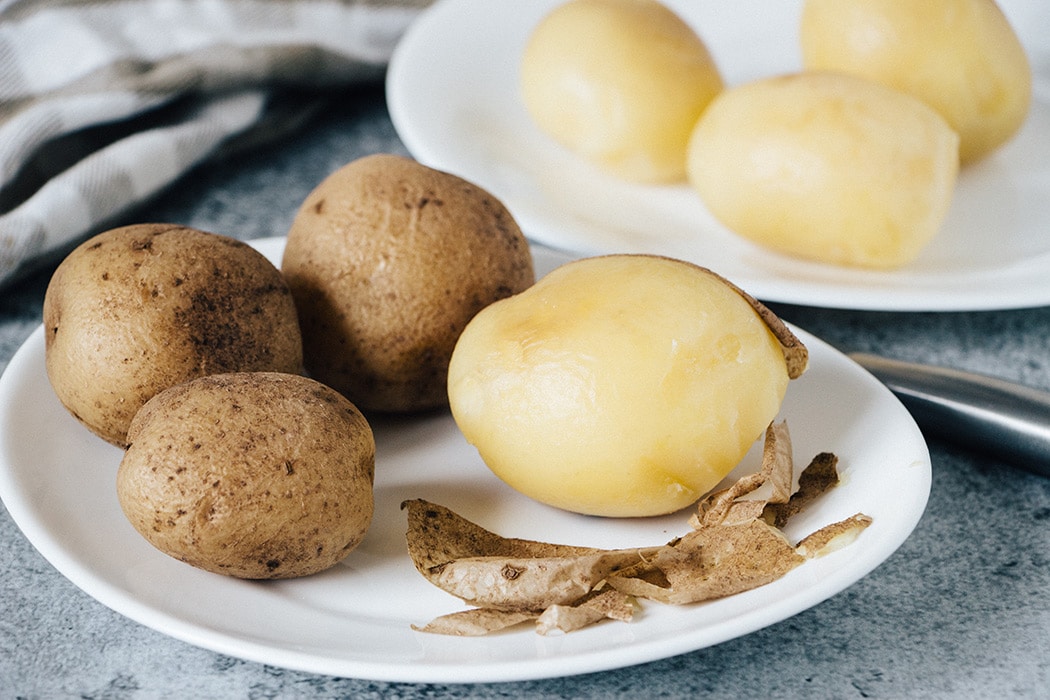
Now mash them with a fork or using a ricer. I prefer a simple fork. IMPORTANT! It is best to make the mashed potatoes ahead of time so they can cool a little and have a better texture for the dumplings. So the day before or at least an hour before is fine. If making the second version of this recipe reserve and grate some raw potatoes.

Then add flour, milk, eggs, and salt to the mashed potatoes.
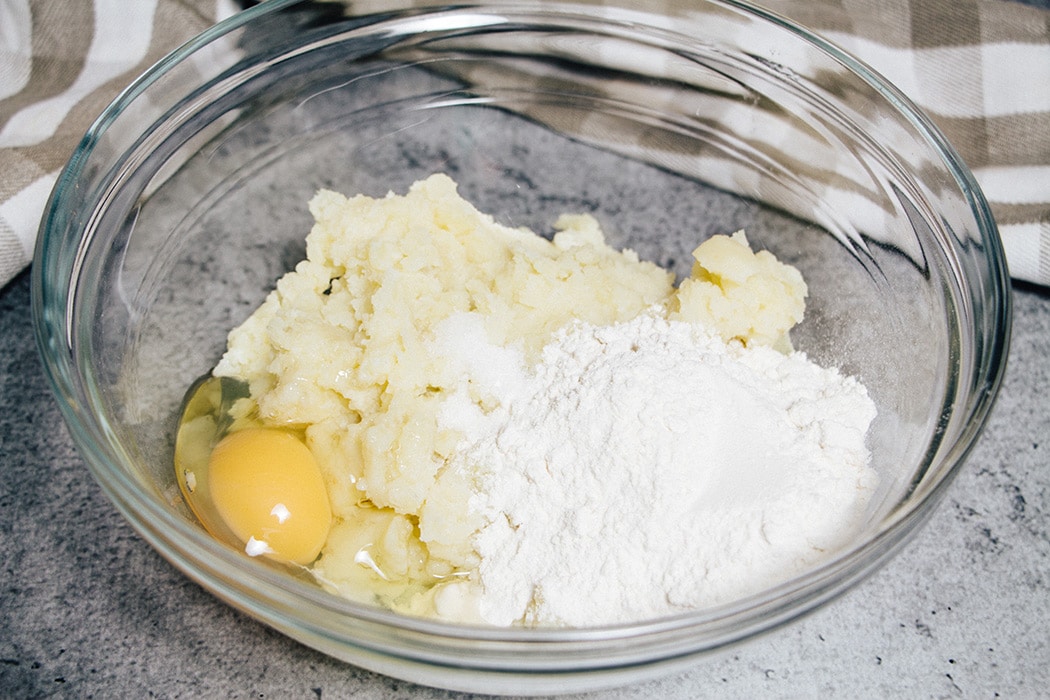
Knead the dough on a floured surface and if it is too sticky to work with add more flour, a tablespoon at a time. Continue to knead until it becomes smooth.
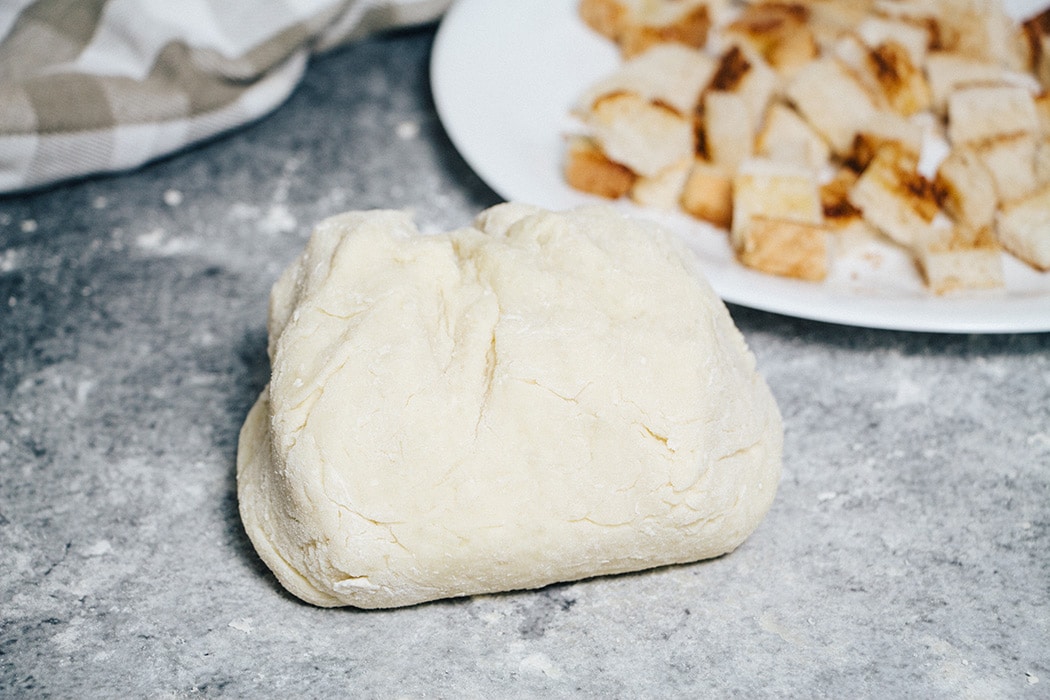
Flour both hands and begin to shape the dough into dumpling balls. As you work on shaping add a few croutons into the middle of the dough.
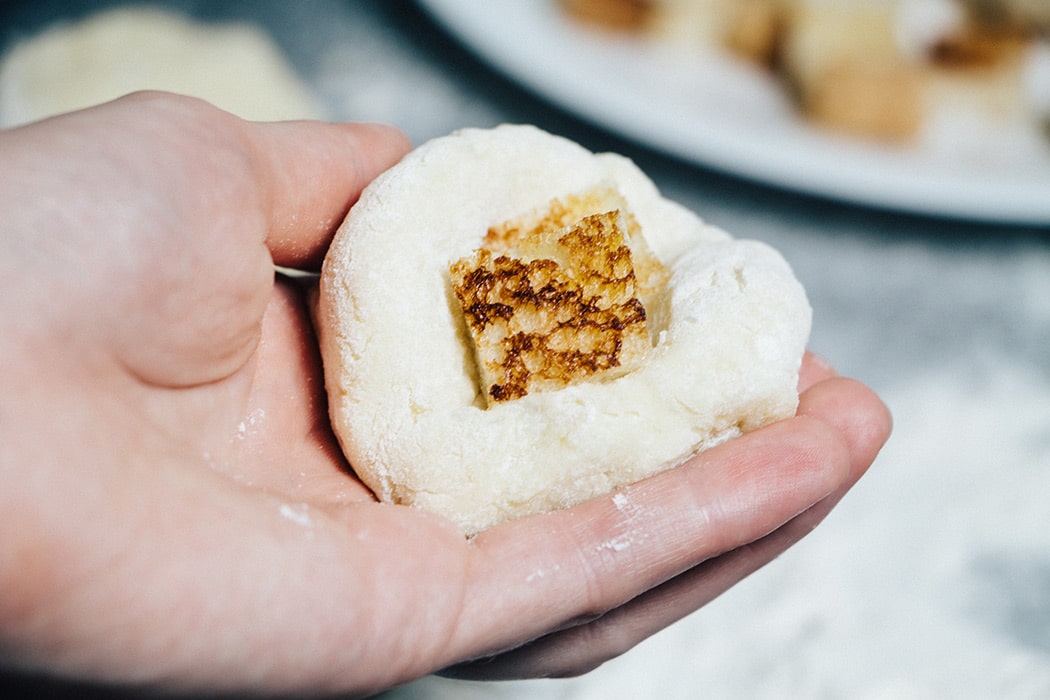
Mold the ball around the croutons.
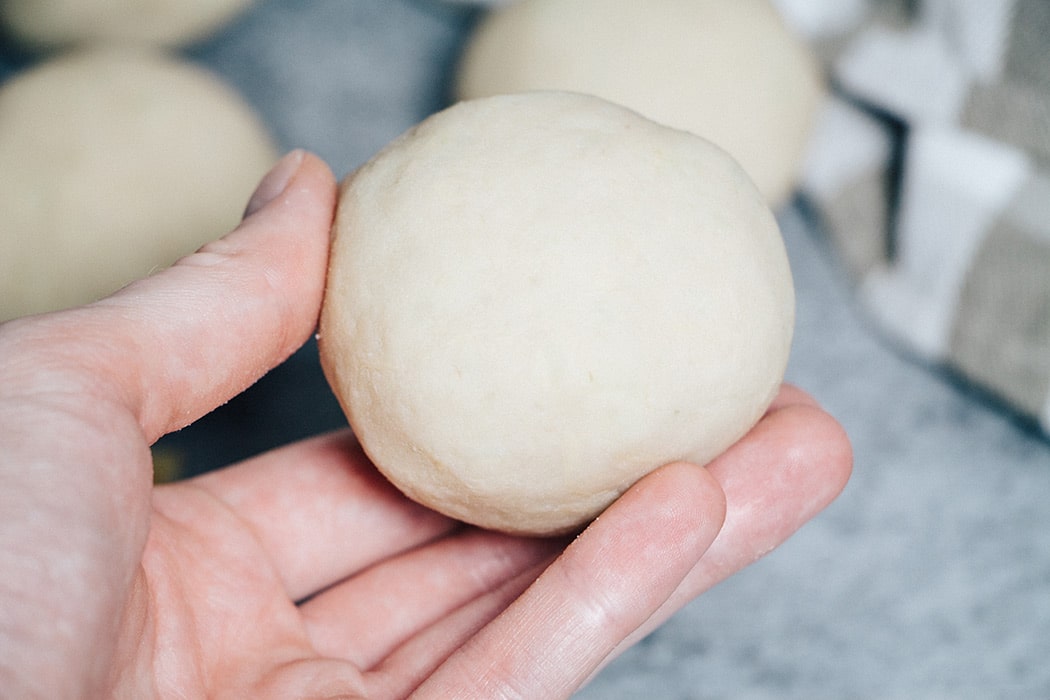
Place the dumpling into a pot of boiling salted water for about 10 minutes. Be careful not to overcrowd the pot. The dumplings should not be touching and will float to the top as they are done.
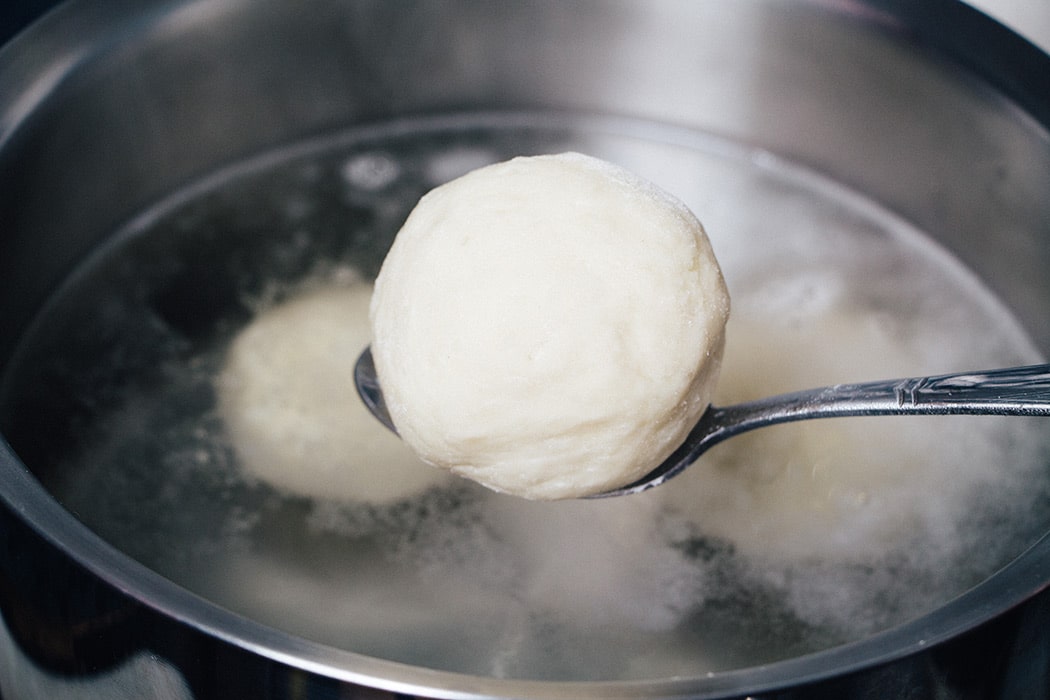
While the dumplings are cooking melt the butter in a saucepan and add the breadcrumbs to make a buttery sauce for the dumplings. Pour it over and voila! Your Kartoffelkloesse are ready.
If making the second version of this recipe with the raw grated potato added, grate the potatoes into cold water.
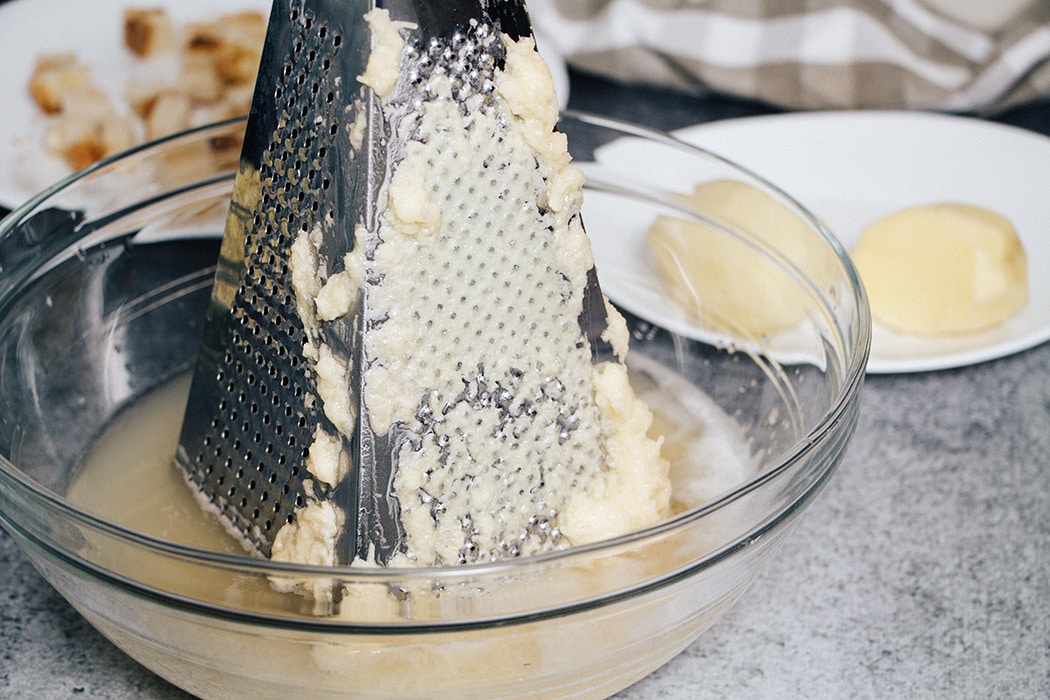
Squeeze dry with cheesecloth.
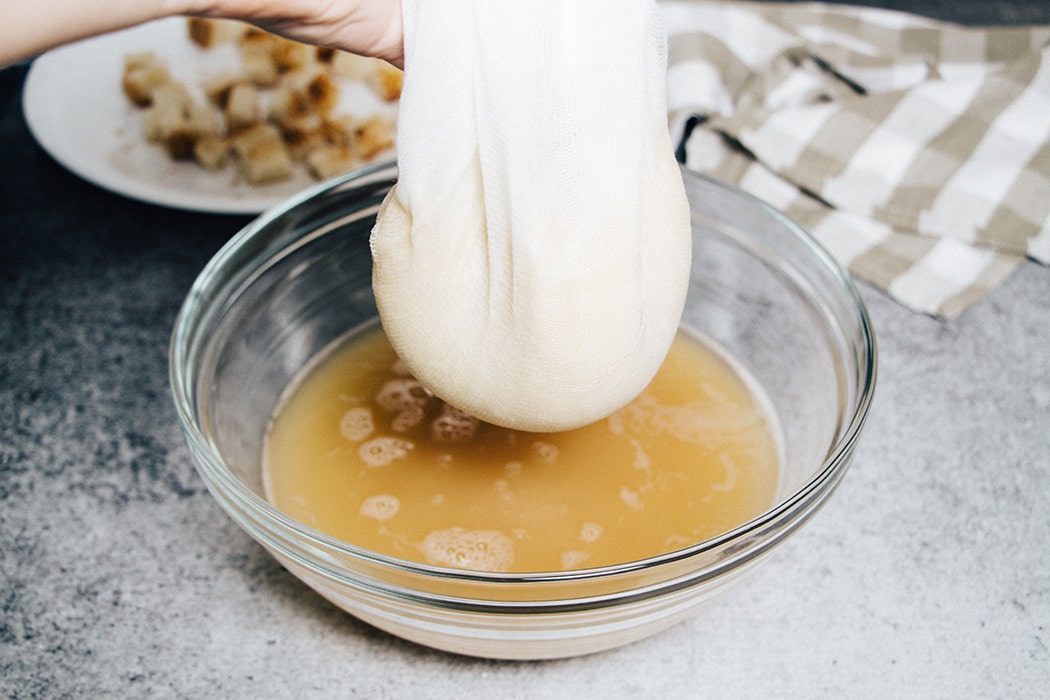
Then mix the grated raw potato in with the mashed potato and continue with the instructions.
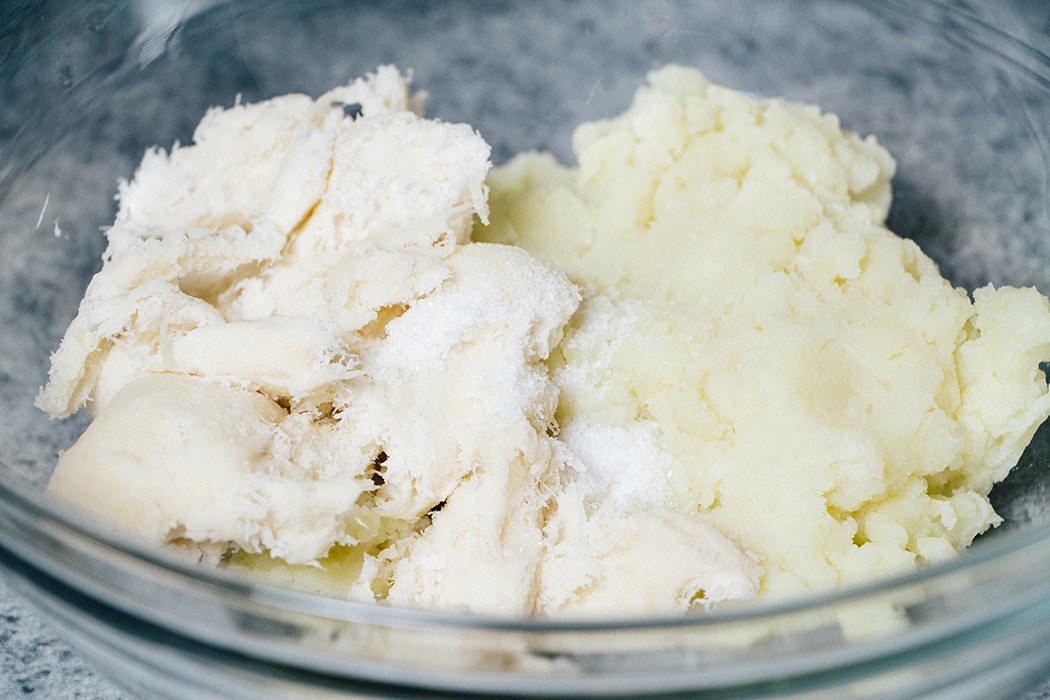
German potato dumplings can be stored in the freezer after cooking. Place the dumplings, so they are not touching, on a cookie sheet until frozen. Then place in a ziplock bag making sure to eliminate all the air. They can be reheated in a frying pan with a little butter and then make a new sauce to pour over when serving. The dumplings should keep for up to 2 months in the freezer.
That's it, guys. If you will try this recipe, let me know how it turned out in a comments section below. I always love to hear about your success with my recipes! 
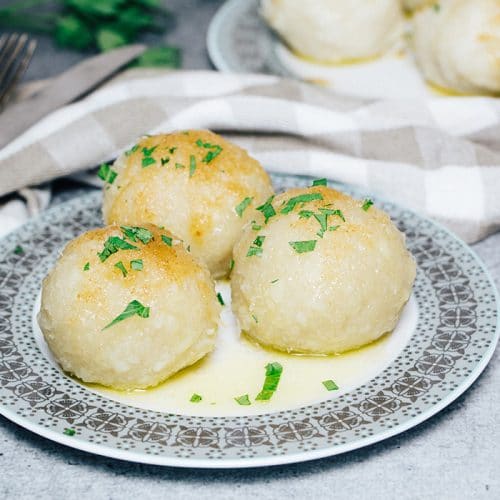
German Potato Dumplings - Kartoffelkloesse
Ingredients
For the version with cooked potatoes:
- 2 lb. (900g) baking potatoes
- 1 cup all-purpose flour , plus more if needed
- 2 eggs , lightly beaten
- 1 teaspoon salt
- 20-25 croutons
- ½ cup butter
- ¼ cup breadcrumbs
For the version with raw and cooked potatoes:
- 3 lb. (1.4kg) baking potatoes
- 1 teaspoon salt
- all-purpose flour (optional)
- 25-30 croutons
- ½ cup butter
- ¼ cup breadcrumbs
Instructions
The version with cooked potatoes:
- In a large pot, cook the potatoes. Peel and mash them. It’s best to do that the day before but keeping mashed potatoes at least for 1 hour in the fridge before making the dumplings will also work.
- Mix with the flour, eggs, and salt. If the dough is too sticky, add more flour, a tablespoon at a time, until it can be kneaded. Knead on a floured surface until smooth.
- With floured hands, shape dumplings pressing a few croutons into the center of each one of them. Mold the dumplings around the croutons.
- Cook in a pot of boiling salted water for about 10 minutes or until the dumplings rise to the top. Don’t overcrowd, the dumplings shouldn’t touch each other during cooking.
- Meanwhile, melt the butter in a skillet and brown breadcrumbs for a few minutes. Pour the sauce over the dumplings and serve with meat or any other main dishes. Enjoy!
The version with raw and cooked potatoes:
- In a large pot, cook 1 pound (450g) potatoes, peel, and mash them. Meanwhile, grate the remaining 2 lbs (900g) potatoes into a pan of cold water. When done, squeeze out all water using a cheesecloth.
- Mix the grated potatoes with the mashed ones. Add the salt and knead on a floured surface. If the dough is too sticky, sprinkle with some flour.
- With floured hands, shape the dumplings pressing a few croutons into the center of each one and molding dough around them.
- Cook in a pot of salted water for about 10 minutes or until the dumplings rise to the top. Avoid overcrowding.
- While the dumplings are cooking, melt the butter in a pan and brown the breadcrumbs for a few minutes. Pour the sauce over the dumplings and enjoy!
Notes
Nutrition
* This post contains affiliate links, thank you for the support in keeping Cooking The Globe up and running!

Margit Weisburd
I was born in Nurnberg-Buch, Germany and taught to make these by my Opa & Oma, who called the all mashed/riced cooked variety: "SEITEN KNÖDEL" (satin dumplings). They are delightful.
My 3 daughters request them often. Our recipe varies slighly. Instead of regular flour I was taught to use POTATO STARCH, in keeping with the potatoes used in the knödel or klöße or dumplings; keeps them very light & fluffy. We also use stale French bead, cut into 1/2" cubes & toasted in additional butter until brown, for the center.
I always make extra klöße, so there will be leftovers; which can be re-heated quite quickly to their almost fluffy beginnings in a microwave. Cover them on a plate, with cling wrap for about a minute or so, on high, one at a time.
Lastly, our preferred re-heat for leftovers is cut them into 1/4" slices & fried until CRISP in salted butter. Careful not to disturb too much. Let them brown on one side before flipping. Do not use oil. Butter browns faster.
We will be enjoying them soon on Christmas Eve with Rouladen & sweet-sour purple cabbage cooked with grated apples, fried bacon lardons & chopped onions.
Definitely worth the work!
Igor
Thank you for such a detailed comment, Angelina! Yes, I saw some recipes using potato starch instead of flour so I am definitely trying this version next time.
What about re-heating them, slicing and frying is my favorite method too!
S. Davis
It’s Seidene Klösse
Ingrid Parker
Mash or grate boiled potatoes a day ahead. I use a juice extractor for the raw potatoes (my mother used to grate them by hand and wring out the juice in a cheese cloth). This produces a dry potato mass and potato starch in the extracted potato juice. Pour off the liquid, combine the grated potatoes and the potato starch. Pour boiled, salted water over this and mix to dissolve the potato starch. Add the grated (or mashed) cooked potatoes. Add salt. Mix. Run cold water over your hands so the potatoes don’t stick too badly while you form balls and drop them into boiling, salted water. Reduce heat. The dumplings are done when they float to the top. We have them with turkey or goose, gravy and red cabbage.
Ashton Morgan
Thanks for sharing this receipt. Would it be okay to make the balls the night before and wait to boil them the next day before the meal?
Wreynn Wood
I was raised in Odessa, Wa where Germans that moved to Russia, and then the U.S. Settled farms. They used cream on the dumplings, I guess as you would gravy and then as on most everything, butter browned crushed up bread crumbs on top.
Wreynn Wood
I left out that it was served with more boiled, peeled potatoes along with the dumplings and plenty of butter along with the cream! Maybe just to stretch the dish to feed more??
Igor
Thank you for your comments, Wreynn! Serving potato dumplings with boiled potatoes on side is... Interesting :)) Maybe to feed more mouths as you say 🙂
Jeanie
You mention milk in your blog post, but I don’t see it as an ingredient on the actual recipe.